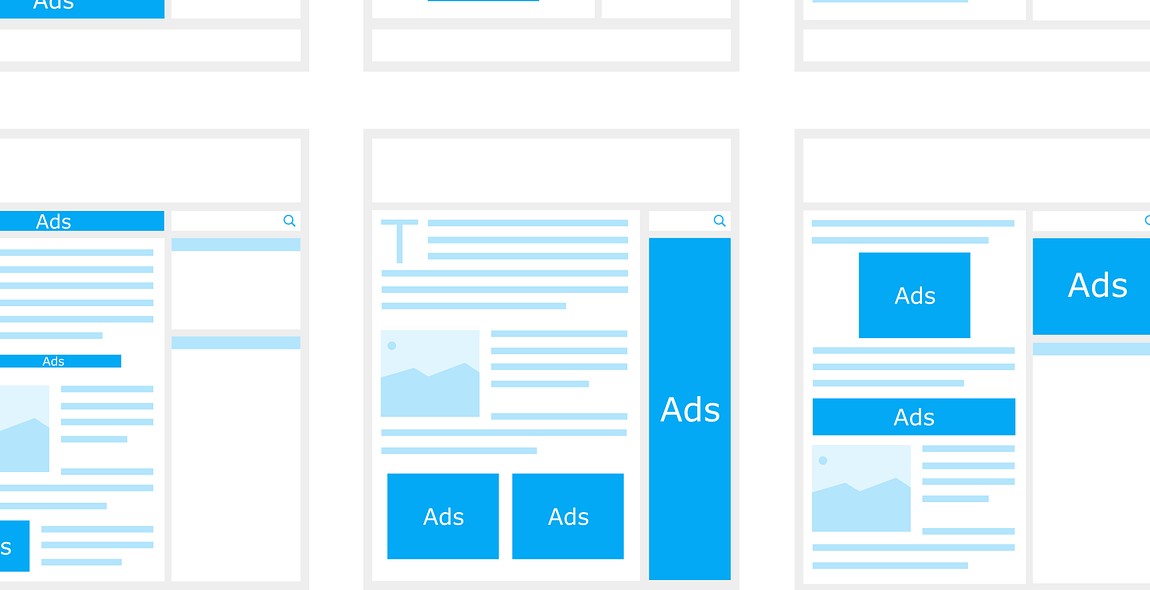How to Start a Blog: Beginner’s Guide to Setting Up and Growing Your Own Blog
Starting a blog can be a fun and rewarding experience, but it can also be overwhelming for beginners. With so many options and decisions to make, it’s easy to get lost in the process. As a professional article writer and content creator, I have years of experience in starting and growing successful blogs. In this beginner’s guide, I’ll share my personal experiences and insights to help you set up and grow your own blog.
Why Start a Blog?
There are many reasons why someone may want to start a blog. It could be to share their personal experiences, to express their thoughts and opinions on a particular topic, or to promote their business or brand. Whatever your reason may be, a blog can be a powerful tool to connect with others and build a community around your interests.
What You Need to Start a Blog
Before you start your blog, there are a few things you’ll need to consider:
- A niche or topic for your blog
- A domain name and web hosting
- A blogging platform
- Content ideas and a content plan
- A social media presence
Setting Up Your Blog
Once you have all the necessary components, setting up your blog is relatively easy. You’ll need to choose a theme, customize your site, and start creating content. It’s important to have a clear vision for your blog and to stay consistent with your posting schedule.
Growing Your Blog
As you start to build your blog, you’ll want to focus on growing your audience and increasing your traffic. This can be done through search engine optimization, social media marketing, and guest posting. It’s also important to engage with your readers and build a community around your blog.
Starting a blog can be a challenging but rewarding experience. With the right tools and knowledge, you can create a successful blog that connects with others and grows over time.
Why Start a Blog?
Starting a blog can be a great way to express yourself, develop professionally, and even monetize your skills. Here are some reasons why you should consider starting a blog:
Personal Expression
Blogging allows you to share your thoughts, experiences, and ideas with the world. Whether you want to write about your travels, your favorite recipes, or your opinions on current events, a blog gives you a platform to express yourself in a creative and meaningful way.
Professional Development
Starting a blog can also help you develop professionally. By creating content on a regular basis, you can hone your writing skills, develop your voice and style, and build a portfolio of work that can showcase your expertise to potential employers or clients.
Monetization Opportunities
Finally, blogging can also be a great way to make money. Whether you want to sell products, offer services, or monetize your content through advertising or sponsorships, a blog can provide you with a platform to turn your passions and talents into a profitable business.
| Personal Expression | Professional Development | Monetization Opportunities |
| Share your thoughts, experiences, and ideas with the world | Hone your writing skills, develop your voice and style, and build a portfolio of work | Sell products, offer services, or monetize your content through advertising or sponsorships |
Overall, starting a blog can be a rewarding experience that can help you grow personally and professionally while also providing you with the opportunity to earn money doing something you love.

Choosing a Blogging Platform
One of the first and most important decisions you will make when starting a blog is choosing a blogging platform. There are several options available, but the most popular ones are WordPress, Blogger, and Wix. Each platform has its own pros and cons, so it’s essential to choose the one that best suits your needs.
| Platform | Pros | Cons |
|---|---|---|
| WordPress |
|
|
| Blogger |
|
|
| Wix |
|
|
Ultimately, the platform you choose will depend on your needs and preferences. If you’re looking for a highly customizable platform with a large community, WordPress may be the best choice. If you want a simple and easy-to-use platform, Blogger or Wix may be a better option. Consider your goals, technical skills, and budget before making a decision.
Setting Up Your Blog
Starting a blog can seem overwhelming at first, but with the right tools and guidance, it can be a fun and rewarding experience. Here are the essential steps for setting up your blog:
1. Domain Name and Hosting
The first step to setting up your blog is choosing a domain name and hosting provider. Your domain name is your blog’s address on the internet, and your hosting provider is where your blog will live online. It’s essential to choose a reliable hosting provider that can handle your blog’s traffic and provide excellent customer support.
- Choose a memorable and unique domain name that reflects your blog’s niche and brand.
- Research and compare hosting providers that offer affordable pricing and reliable services.
- Install WordPress on your hosting account using the one-click installer provided by your hosting provider.
2. Design and Theme
The design and theme of your blog are crucial for creating a visually appealing and user-friendly experience for your readers. WordPress offers thousands of free and premium themes that you can choose from and customize to fit your brand and style.
- Choose a theme that is responsive, mobile-friendly, and optimized for SEO.
- Customize your theme’s colors, fonts, and layout to match your brand and style.
- Add a logo and other branding elements to your blog to make it stand out.
3. Plugins and Widgets
Plugins and widgets are essential tools that can help you add functionality and features to your blog. WordPress offers thousands of free and premium plugins and widgets that you can install and customize to meet your needs.
- Install essential plugins like Yoast SEO, Jetpack, and Akismet to improve your blog’s SEO, security, and performance.
- Add social media widgets, email subscription forms, and other useful widgets to your blog to engage your readers and grow your audience.
- Test and optimize your plugins and widgets regularly to ensure they are working correctly and not slowing down your blog’s performance.
| By following these essential steps, you’ll be well on your way to setting up and growing your own successful blog. Remember to stay consistent, create quality content, and engage with your audience to build a loyal following and achieve your blogging goals. |

Creating Quality Content
Creating quality content is the most important aspect of starting and growing your own blog. It is what will attract and retain readers, and ultimately make your blog successful. Here are some tips for creating quality content:
Identifying Your Niche
The first step in creating quality content is identifying your niche. You need to know what topics you are passionate about and what topics your target audience is interested in. This will help you create content that is both informative and engaging.
Developing a Content Strategy
Once you have identified your niche, you need to develop a content strategy. This means planning out the types of posts you will create, the frequency of your posts, and the tone of your writing. Your content strategy should be aligned with your overall blogging goals.
Writing Engaging Posts
When it comes to writing engaging posts, there are a few key things to keep in mind. First, make sure your posts are well-researched and informative. Second, use a conversational tone that is easy for your readers to understand. Third, include visual elements like images and videos to make your posts more engaging.
- Do your research
- Write in a conversational tone
- Include visual elements
By following these tips, you can create quality content that will attract and retain readers, and ultimately make your blog successful.

Promoting Your Blog
Once you have created a blog and published some quality content on it, the next step is to promote it. Promoting your blog is crucial to increase its visibility and attract readers. In this section, we will discuss some effective ways to promote your blog.
Social Media Marketing
Social media platforms are a great way to promote your blog and reach a wider audience. Share your blog posts on social media platforms such as Facebook, Twitter, and LinkedIn. Create social media accounts for your blog and engage with your followers. This will help you build a community around your blog and increase its visibility.
Guest Blogging
Guest blogging is another effective way to promote your blog. Find blogs in your niche that accept guest posts and contribute quality content to them. This will help you build relationships with other bloggers in your niche and attract new readers to your blog.
SEO and Keyword Research
Search engine optimization (SEO) is crucial for the success of your blog. Conduct keyword research to find the keywords that your target audience is searching for. Use these keywords in your blog posts and optimize your blog for search engines. This will help your blog rank higher in search engine results and attract organic traffic.
| Effective Ways to Promote Your Blog |
|---|
| Social Media Marketing |
| Guest Blogging |
| SEO and Keyword Research |
By implementing these strategies, you can promote your blog and attract readers. Remember, promoting your blog is an ongoing process, so keep experimenting with different strategies and find what works best for you.

Monetizing Your Blog
Once you have established a loyal readership, it’s time to start monetizing your blog. There are several ways to do this, including:
Affiliate Marketing
Affiliate marketing involves partnering with companies and promoting their products or services on your blog. You will earn a commission for every sale made through your unique affiliate link. Choose products and services that are relevant to your niche and audience to increase your chances of success.
Advertising
Advertising is a popular way to monetize a blog. You can sell ad space directly to companies or use ad networks like Google AdSense to display ads on your site. It’s important to strike a balance between ads and content to avoid overwhelming your readers and negatively impacting user experience.
Sponsored Content
Sponsored content involves partnering with brands to create content that promotes their products or services. This can include sponsored blog posts, reviews, and social media campaigns. It’s important to disclose sponsored content to your readers to maintain transparency and credibility.
| Monetization Method | Pros | Cons |
|---|---|---|
| Affiliate Marketing | Passive income, no need to create your own products | May require a large readership to generate significant income |
| Advertising | Easy to set up, can generate consistent income | May negatively impact user experience if overdone |
| Sponsored Content | Opportunity to work with brands and earn income | May compromise credibility if not disclosed properly |
Experiment with different monetization methods to find what works best for your blog and audience. Remember to always provide value to your readers and maintain transparency to build trust and credibility.

Conclusion
Starting a blog can be a daunting task, but with the right steps, it can be a fulfilling experience. Remember that blogging requires patience, consistency, and hard work. You won’t see results overnight, but with persistence, you can grow your blog and reach a wider audience.
Recap of the Steps to Start a Blog
- Choose a niche and domain name
- Choose a blogging platform and hosting provider
- Install and customize your blogging theme
- Create high-quality content and optimize for SEO
- Promote your blog on social media and other platforms
- Engage with your readers and build a community
Final Thoughts
Starting a blog can be a great way to share your thoughts, ideas, and experiences with the world. It can also be a source of income and a way to build your personal brand. Remember that starting a blog is just the beginning of a journey. To succeed, you need to keep learning, adapting, and improving your blog. With hard work and dedication, you can turn your blog into a successful and rewarding venture.
| Need Help Starting Your Blog? | Contact Us |
